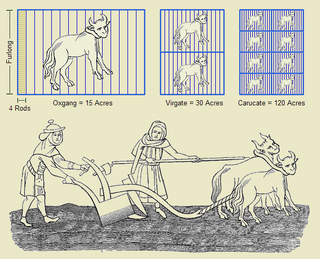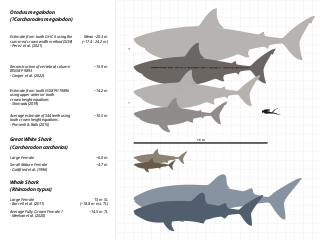Related Research Articles

A furlong is a measure of distance in imperial units and U.S. customary units equal to one eighth of a mile, equivalent to 660 feet, 220 yards, 40 rods, 10 chains or approximately 201 meters.

The metre or meter is the base unit of length in the International System of Units (SI). The SI unit symbol is m. The metre is defined as the length of the path travelled by light in a vacuum in 1/299 792 458 of a second. The metre was originally defined in 1793 as one ten-millionth of the distance from the equator to the North Pole along a great circle, so the Earth's circumference is approximately 40000 km. In 1799, the metre was redefined in terms of a prototype metre bar. In 1960, the metre was redefined in terms of a certain number of wavelengths of a certain emission line of krypton-86. The current definition was adopted in 1983 and slightly updated in 2019.

Measurement is the assignment of a number to a characteristic of an object or event, which can be compared with other objects or events. The scope and application of measurement are dependent on the context and discipline. In the natural sciences and engineering, measurements do not apply to nominal properties of objects or events, which is consistent with the guidelines of the International vocabulary of metrology published by the International Bureau of Weights and Measures. However, in other fields such as statistics as well as the social and behavioural sciences, measurements can have multiple levels, which would include nominal, ordinal, interval and ratio scales.

Athletics is a group of sporting events that involves competitive running, jumping, throwing, and walking. The most common types of athletics competitions are track and field, road running, cross country running, and race walking.
In measurement technology and metrology, calibration is the comparison of measurement values delivered by a device under test with those of a calibration standard of known accuracy. Such a standard could be another measurement device of known accuracy, a device generating the quantity to be measured such as a voltage, a sound tone, or a physical artifact, such as a meter ruler.

Track and field is a sport which includes athletic contests established on the skills of running, jumping, and throwing. The name is derived from where the sport takes place, a running track and a grass field for the throwing and some of the jumping events. Track and field is categorized under the umbrella sport of athletics, which also includes road running, cross country running, and racewalking.
The foot (pl. feet), abbreviation and IEEE standard symbol: ft, is a unit of length in the imperial and US customary systems of measurement. The prime symbol, ′, is a customarily used alternative symbol. Since the International Yard and Pound Agreement of 1959, one foot is defined as 0.3048 meter exactly. In customary and imperial units, one foot comprises 12 inches and one yard comprises three feet.
Flow measurement is the quantification of bulk fluid movement. Flow can be measured in a variety of ways. The common types of flowmeters with industrial applications are listed below:

Cycle sport is competitive physical activity using bicycles. There are several categories of bicycle racing including road bicycle racing, time trialling, cyclo-cross, mountain bike racing, track cycling, BMX, and cycle speedway. Non-racing cycling sports include artistic cycling, cycle polo, freestyle BMX and mountain bike trials. The Union Cycliste Internationale (UCI) is the world governing body for cycling and international competitive cycling events. The International Human Powered Vehicle Association is the governing body for human-powered vehicles that imposes far fewer restrictions on their design than does the UCI. The UltraMarathon Cycling Association is the governing body for many ultra-distance cycling races.

Stadiametric rangefinding, or the stadia method, is a technique of measuring distances with a telescopic instrument. The term stadia comes from a Greek unit of length Stadion which was the typical length of a sports stadium of the time. Stadiametric rangefinding is used for surveying and in the telescopic sights of firearms, artillery pieces, or tank guns, as well as some binoculars and other optics. It is still widely used in long-range military sniping, but in many professional applications it is being replaced with microwave, infrared, or laser rangefinding methods. Although much easier to use, electronic rangefinders can give away the shooter's position to a well-equipped adversary, and the need for accurate range estimation existed for much longer than electronic rangefinders small and rugged enough to be suitable for military use.

A sound level meter is used for acoustic measurements. It is commonly a hand-held instrument with a microphone. The best type of microphone for sound level meters is the condenser microphone, which combines precision with stability and reliability. The diaphragm of the microphone responds to changes in air pressure caused by sound waves. That is why the instrument is sometimes referred to as a Sound Pressure Level (SPL) Meter. This movement of the diaphragm, i.e. the sound pressure deviation, is converted into an electrical signal. While describing sound in terms of sound pressure (Pascal) is possible, a logarithmic conversion is usually applied and the sound pressure level is stated instead, with 0 dB SPL equal to 20 micropascals.
Track and field athletics officials or track and field athletics technical officials are referees responsible for judging the various events within track and field. They can be sub-divided into four main groups: field judges, track judges, timekeepers, and starters. While most are versatile over the course of a season, they are given specific assignments to focus on during the course of a meet. At a high level meet there might be, for example; an official to call the athletes and record their results, one or more officials to watch the circle or jumping line, one or more officials to mark the landing spot, one to operate a wind game and one to watch the time limit for the athlete. New electronic devices for timing, measurement or other technological operations might require additional specialists. And ultimately there is a referee to supervise that all are performing to the proper specifications according to the rules; and to make on the spot decisions when there is a controversial issue to settle.
In copper twisted pair wire networks, copper cable certification is achieved through a thorough series of tests in accordance with Telecommunications Industry Association (TIA) or International Organization for Standardization (ISO) standards. These tests are done using a certification-testing tool, which provide pass or fail information. While certification can be performed by the owner of the network, certification is primarily done by datacom contractors. It is this certification that allows the contractors to warranty their work.

The Jones Counter is a device fitted to the front wheel of a bicycle that counts the revolutions of the wheel. It was invented in 1971 by Alan Jones in order to measure the length of road running race courses. The counter has gears that drive a mechanical digital counter. One count typically corresponds to about 1/20th of a wheel revolution ; this provides a resolution of about 10 cm in course length, although overall accuracy, depending on calibration and other factors, is lower, but normally better than 1 part in 1,000.
The Association of International Marathons and Distance Races, also known as AIMS, is an association of the organisers of long-distance road running races. It was founded in 1982 at a meeting in London of marathon race directors. Its membership was extended in 1986 to include all road races. In June 2016, over 400 race organisations were members.

Bird measurement or bird biometrics are approaches to quantify the size of birds in scientific studies. The measurements of the lengths of specific parts and the weights of birds varies between species, populations within species, between the sexes and depending on age and condition. In order for measurements to be useful, they need to be well defined so that measurements taken are consistent and comparable with those taken by others or at other points of time. Measurements can be useful to study growth, variation between geographically separated forms, identify differences between the sexes, age or otherwise characterize individuals birds. While certain measurements are regularly taken in the field to study living birds some others are applicable only to specimens in the museum or measurable only in a laboratory. The conventions used for measurement can vary widely between authors and works, making comparisons of sizes a matter that needs considerable care.
Tree volume is one of many parameters that are measured to document the size of individual trees. Tree volume measurements serve a variety of purposes, some economic, some scientific, and some for sporting competitions. Measurements may include just the volume of the trunk, or the volume of the trunk and the branches depending on the detail needed and the sophistication of the measurement methodology.
The sports under the umbrella of athletics, particularly track and field, use a variety of statistics. In order to report that information efficiently, numerous abbreviations have grown to be common in the sport.

Size is the magnitude or dimensions of a thing. Size can be measured as length, width, height, diameter, perimeter, area, volume, or mass.
References
- USATF Course Measurement and Certification Procedures: The Shortest Possible Route Retrieved May 26, 2010.
- USATF Course Measurement and Certification Procedures: Statement of Requirements Retrieved May 26, 2010.
- "IAAF Publication, "The Measurement of Road Race Courses", Second Edition, 2004, Updated 2008" (PDF). Retrieved May 26, 2010.
- 4. SHORT COURSE PREVENTION FACTOR - Association of UK Course Measurers Retrieved May 26, 2010.
| This athletics and track and field article is a stub. You can help Wikipedia by expanding it. |